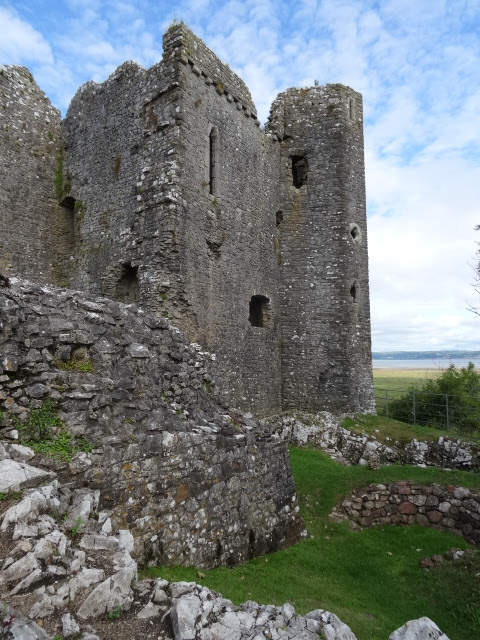A jaunt onto Gower this morning and a visit to Weobley Castle, romantically set high above the salt marshes on the north coast of the peninsula with wide views across the Loughor estuary and far to the Brecon Beacons. On the landward side the castle stands beside a working farm. As castles go not at all large, but a comfortable fortified manor house, the best remaining example of its type in Glamorgan according to the Buildings of Wales volume on the county. Some nice architectural details too. In places the ruins seem to merge with the natural outcropping rocks.
Wednesday 19 July 2023
Weobley Castle
Labels:
architecture,
castles,
Glamorgan,
Gower,
Gwyr,
Llanmadog,
Swansea,
Weobley Castle
Sunday 2 July 2023
'A Time to Keep Silence'
A short post on a short but rather fascinating and atmospheric book by, favourite of this blog, Patrick Leigh Fermor, the English travel writer. Published in 1953 by the Queen Anne Press and illustrated by Fermor's friend the Neo-Romantic artist John Craxton, 'A Time to Keep Silence' forms a meditation on the monastic life - mainly Western - with one short chapter on the abandoned rock-hewn Orthodox monasteries of Cappadocia, 'this cruel and flaming territory', in south-eastern Anatolia. In the two proceeding chapters he gathers together of a number of functioning monastic houses in France, where, over the years, Leigh Fermor retreated to write far away from exigences of the Modern World.
What unifies this rather awkward and unequal yoking together of East and West is that search for the ....well, not quite the spiritual for I don't think of Leigh Fermor as conventionally religious after all he was in many respects a man of the world, unable, as Michael Duggan quoted in his excellent article in the Catholic Herald, to resist 'the soft hiss of the soda syphon'. Then what?
The answer is perhaps difficult to fully explain, but at the end of that third chapter 'in the land of the basilisk and the cockatrice, of the Panic terror and the Noonday Devil' Leigh Fermor and travel companion 'peered into a deep valley, green with the foliage of plum trees and wild apple, overshadowing the winding track of a rivulet. The sides of the canyon, too, were covered with the straggling descendant of a vineyard; the last seedlings of the vines and orchards planted here by the monks of a millennium ago'. In an arid terrain the monks created a mimetic representation of Eden. A glimpse of heaven. A place of order and calm in a hostile environment. A place of shade and rest under the fierce glare of the sun; a sort of treasure trove, a shatzkammer. A repository of culture, learning and liturgical & artistic riches.
It is only now on an early Sunday morning as I type out Leigh Fermor's elegant phrases I realise that what all the monasteries in this book have in common is ruin. At one point in their history they have either been deliberately destroyed or have been left to decay by an indifferent and ignorant people. And Leigh Fermor sees this a sort of Fall. Some of the Western ones have been rebuilt, but the Eastern ones still await resurrection.
Subscribe to:
Posts (Atom)







